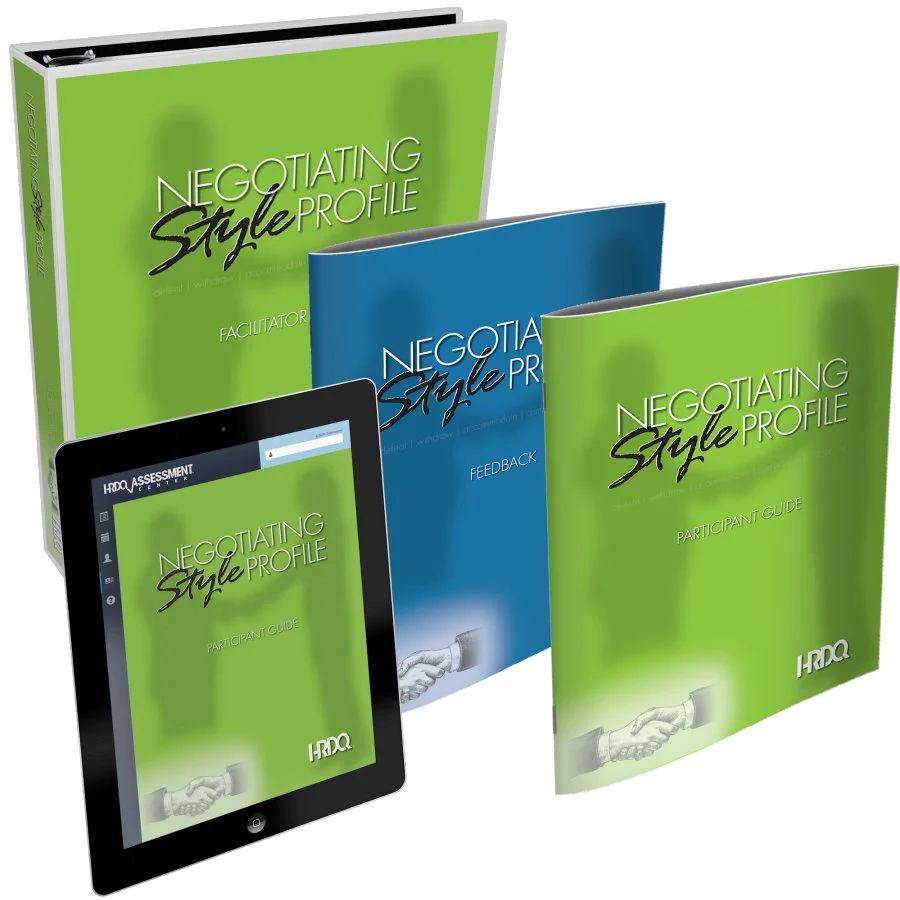The Two Concerns of Negotiators
There are two concerns that every negotiator has. The first concern is with the outcome or substance of the agreement, and the second concern is the relationship with the other party.
People have varying degrees of interest in these two behavioral dimensions. For example, one person may want to drive the best result at any cost, while another may be more concerned with keeping the relationship positive than the potential outcome. The negotiator who is focused on outcomes thinks that only the best deal matters. But the relationship-focused person may ask themselves questions like “What kind of relationship should we build before and during our discussion,” “Does the other person have certain needs they want fulfilled,” and “How will our relationship affect the other party’s willingness to carry out our agreement?”
Five Negotiating Styles
In the art of negotiating, there are five main negotiating styles that you should be aware of when entering into a situation where you want to achieve your objective. Some styles are more effective than others.
- Defeat – The defeating style focuses on getting as much as you can. This style doesn’t worry about the relationship at all; it just focuses on defeating the other person.
- Accommodate – The accommodating style focuses on maintaining positive relationships with the other person – at the expense of the outcome.
- Withdraw – The withdrawing style means that the person resigns themselves to whatever happens. There’s a low degree of concern for the other part or the outcome itself.
- Compromising – The compromising style reduces conflict with tradeoffs and halfway measures. They believe that some concern must be shown for the longer-term relationship with the other party or the negotiated outcome will not be adequate.
- Collaborate – The collaboration style uses problem-solving to reach an optimal agreement that creates a healthy relationship with the other party. There is a high degree of concern for both the outcome of the negotiation and the working relationship.
It’s been proven that the collaboration style produces the greatest benefits long-term because it places importance on both the outcome of the negotiation and the health of the relationship. This style makes it easier for both parties to build trust and share information, which is necessary for a successful negotiation.
Five Key Negotiating Skills
There are five key skills that everyone needs in order to become more successful at negotiation. They include
- Maintaining Composure: When stakes are high, emotions can get heated. Maintaining your composure is important to ensure that you receive the desired outcome. You can view the issue with objectivity and assess the situation better.
- Developing Data: The negotiator should develop and gather as much data and information as possible in order to know how to negotiate. Knowledge is power, and whoever has more of it is more likely to succeed.
- Refocusing the Discussion: Some difficult negotiators may try to throw their opponent off when negotiating. This can cause the other one to fail. You must persist in keeping things focused in order to achieve the result you want.
- Being Creative: When negotiations are stuck because both parties can’t see the other side, creativity is helpful. Thinking outside the box can allow both negotiators to come up with better ways to compromise.
- Handling Information Strategically: Once the information is gathered, the effective negotiator must handle the information carefully. They need to use it to their knowledge and strategize about how to best use it for their own benefit.
Determining if a Negotiation Was Successful
The elements of a successful negotiation always remain the same. They include the consensus on the objectives of the agreement, creating guidelines that outline policies and procedures, resourcing commitments, establishing a framework for assigning and measuring responsibility, and the agreement on the consequences of achieving the desired results.
A successful negotiation will allow you to not only achieve the result you want, but it helps set the tone for future negotiations.
Watch Enhancing Your Negotiation Powers to learn more about the art of negotiating. The webinar will address common mistakes made before and during difficult negotiations and provide strategies for success. You will learn how to discover your negotiating style, contrast various negotiating styles, which negotiating style works best in given situations, determine how to improve negotiating effectiveness, how to collaborate without giving in or haggling, and how to maintain good relationships while negotiating.
This webinar uses research from Negotiating Style Profile, a comprehensive training program giving emerging and experienced leaders the tools and techniques for developing and refining their negotiating skills. This self-assessment offers a simple framework for determining one’s negotiating style and the likely effect it has in negotiating situations.


























